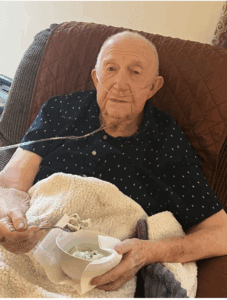There are many hot button issues in the EMDR community that get discussed in formal consultation, or informally in the online support groups. A shortlist includes:
- Can you do EMDR therapy with someone who is pregnant?
- Which protocol works the best for addiction and can you do EMDR with someone who is still using substances?
- How do you handle dissociation and parts work?
- How much time is really needed in Phase 2 preparation?
- And the list goes on…
I often joke in my EMDR therapy basic trainings that you can get ten different, often very experienced EMDR therapists around a table and get ten different opinions. Indeed, even within my own training program (The Institute for Creative Mindfulness) where we are of a similar philosophical mind on how to teach and to approach EMDR, consultants’ opinions can vary drastically.
I’ve long noticed a disturbing trend in our community that seems to be intensifying as online EMDR clinical support groups grow—the spread of misinformation and in many cases disinformation. A primary source of this seems to be approved consultants, and thus the EMDR students they serve, passing off information that is an opinion (even if it’s well-formed clinical opinion) as absolute fact. In reality, with EMDR therapy or any form of psychotherapy, there is so much material that is open to interpretation and clinical variation. Flexibility is imperative in working with traumatized clients. Yes, those of us who teach EMDR can get finicky or even regimented about good technique (e.g., following the standard protocol, continuing to use reprocessing speed in Phase 5, correcting people when they don’t use 1-7 for a VoC scale in consultation). Yet so many of the other big questions, like the ones that opened this article, are open to clinical interpretation and informed clinical judgment. When I hear statements from consultants and trainers, or see comments in the groups like, “Do not do EMDR therapy with someone who has a Dissociative Experiences Scale (DES) score over 30,” or “Absolutely do not do EMDR with someone who is in the first trimester of pregnancy,” I get concerned.
Absolutely? Really? Based on what?
And interestingly, I’ve also heard and seen statements like, “Absolutely do not do EMDR therapy with someone who is in the third trimester of pregnancy.”
Hmm, so which is it?
See the problem?
Before offering some solutions to the problem at hand in this article, both for clinicians and consultants, and for new EMDR therapists trying to sort through it all, I do want to make some things clear. First, having opinions is not inherently a bad thing. Consultation is essentially the art of a more experienced practitioner sharing informed clinical opinion.
I have opinions. Lots of them. When teaching EMDR therapy students and through my writing, I can justify my opinion and support it from a place of long-time clinical experience with EMDR therapy and as a survivor of complex trauma living with a dissociative disorder. As an EMDR teacher, scholar, and writer, I have a general sense of how other EMDR trainers and consultants may operate differently. I am generally able to share what divergent opinions exist or to explain different ways of handling a similar situation. Sometimes my answer is as simple as, “I do not use that particular variation of EMDR therapy (e.g., Flash Technique, the Feeling State Addiction Protocol); here’s what I can tell you based on what I know, and here’s a consultant you can go to who knows more than I.”
Good consultants, even those of us with strong opinions based on our own experience, ought to be able to see other angles that stretch beyond our own worldview. I still call out opinions or interpretations of the literature that I feel are divorced from clinical reality. In doing so, I am willing to either justify my position or preface my challenge by saying, “I am going on one of my soapboxes here.” Usually those soapboxes are mounted from my experience of navigating my own mental health issues, impacted by the fear and stigmatization of people with complex trauma or dissociation.
I also believe that Dr. Shapiro fundamentally made a solid move in allowing the EMDR International Association to be created and thus allow trainers who are not connected to her and to her institute to be able to offer their versions of EMDR trainings. And with the consultation model embraced by EMDRIA in order to first certify practitioners (the consultation component was added to basic training in 2007), they opened up the community to a diversity of clinical experiences being exchanged. Yet disagreement and clashing amongst professionals with strong personalities, even if we are all fans of EMDR therapy, was inevitable. Sure, we all go through a similar approval process to become Approved Consultants, and of course there are many who think that the process isn’t sufficiently stringent or standardized. Yet I’ve never believed that toughening up the standards of who gets through as an Approved Consultant will ever solve the inevitable differences of opinion that emerge amongst professionals. We are human beings, after all!
For Trainers and Consultants
Much of the information that gets spread around in the EMDR community as fact does not originate with trainers or consultants. When you were a kid you may have played the game of “Telephone.” In this game, one person in a line starts a message, and whispers it to the ear of the next person, and so on. By the time the message got to the last kid in the line, it often became severely distorted. Once, a student at one of my Advanced Topics trainings came up to me, insisting that another well-known EMDR teacher taught her that eye movements guided by the fingers are much superior to eye movements guided by an app or a Light Bar because it creates a greater sense of human attachment.
“That doesn’t sound like something she would say, “ I offered my student, “But I will ask her.”
Indeed, when I followed up with my colleague, she laughed, and I truly believed her when she told me she never said that. Normalize following up with your colleagues, especially if they work in the same training group as you, if you hear things that sound unfounded. These follow-up conversations can be helpful to your colleagues in clarifying what and how they may teach.
I’ve accepted that students are often so overwhelmed with information in EMDR trainings and EMDR consultation groups that wires are inevitably going to get crossed. Information will get missed and people will often hear different things differently than we intend to communicate them. Part of this is human nature. And another aspect of this phenomenon may challenge us as trainers to do some informal periodic assessments in our groups, like pop quizzes, to determine any points of misinformation that may exist in our groups and facilitate a discussion to correct any misconceptions…either about the EMDR protocol or how we may teach its application.
The main solution that I offer for trainers and consultants is a cornerstone of what I teach team members in my own program. Be able to distinguish the difference between what Dr. Shapiro writes in her core text (EMDR Therapy Basic Principles, Protocols, and Procedures; 3rd edition), what the basic training curriculum you are consulting for teaches, and what you actually believe or execute in clinical settings. Solid consultants will also have a knowledge of the EMDRIA Definition of EMDR Therapy, and some knowledge of what divergent opinions and perspectives in the EMDR community may teach in case these issues come up in consultation.
My first major EMDR consultant is a brilliant woman, and a Past President of EMDRIA, named Dr. Sara Gilman. She had such a wonderful way of prefacing her responses to my questions with, “This is what Francine would want you to do, what’s in the text….” and she would give that answer. Then she followed it up with, “This is what I actually do.”
I’ve used this line to inspire myself as an educator and as a consultant ever since.
In a growing field like EMDR therapy, there is a body of research; yet specific research for every population and clinical situation is still lacking. Thus, turning to the field experience of those of us who have been around a little while to navigate situations critically is imperative. Moreover, we must also admit that so much research does not happen in usual care settings or reflect the demographics of the people we see in our practices. So while research and science are imperative in the modern clinical arena, relying only on research gives us an incomplete picture.
The shadow side of the consultation model is that differences of clinical and philosophical opinion will inevitably emerge. How can we present the reality of those differences, behave like adults in the process, and make sure that our consultees do not get totally tangled in the flurry of mixed messages?
One method I like to use is leaning into how my home base of 12-step recovery frames the concept of advice. A good sponsor (i.e., recovery mentor) does not give advice. Rather, we share our experience, strength, and hope in a situation. Especially when I share the “this is what I really do” aspects of my consultation and teaching, I share from my lived clinical experience and can support it accordingly if asked. This mindset, I feel, can help take our ego out of the way. The “know it all” attitudes that some consultants project cannot only be off-putting to new people, they can also promote this air of absolutism that I hear so many newer (and some veteran) EMDR therapists project.
“But this is the way I was trained,” I hear many people say.
Although I am still navigating my perfect diplomatic responses to that statement, I usually go with, “Well, that’s definitely a way to do it. Here is how (and why) I do it differently.”
If I feel that what a person shares from their training is technically incorrect or harmful, I am prepared to support it with evidence from the Shapiro text, the EMDRIA Definition of EMDR, or other clinical material (e.g., both from the larger canon of clinical research and writing, or experience). And then I encourage people to check it out for themselves.
For New EMDR Therapists
If you’ve made it this far, I hope that the blog has not totally scared you away from the EMDR community! Naturally, whenever you get a passionate group of people together, there are going to be differences of opinion, style, and approach. Like with any other area of life, not everything you hear from everyone is Gospel truth. Practicing some discernment becomes key. Please know that while there are some core fundamentals that we want you to work on as EMDR therapists, there is also a large amount of grey area in learning how to navigate complicated clinical situations within EMDR therapy.
Some of us, as people, do better with grey than others. When I used to coach high school speech and debate, the most successful team I worked on contained a group of very qualified coaches. And we coaches, especially those of us with strong personalities, often disagreed. We had some students who were able to hear feedback from six different coaches and integrate it all, and we had others who would crumble when they heard two differing opinions. If you know that you are like the students I mentioned who cannot easily deal with divergent perspectives, it may be best if you stick with just one consultant or EMDR teacher at first, at least until you get the hang of it. At some point I hope you can branch out and hear differing perspectives and perhaps read some books or take some courses from other teachers. Yet doing so from a solid base where you are not confused may help you.
I also recommend that you choose consultants, teachers, and writers who are open to differences of opinion and differences in interpretation, even of the core Shapiro text. I try from the bottom of my heart, even when I passionately mount my soapboxes, to be one of those people. I’ve encountered EMDR consultants, training groups, and organizations out there who appear to be even more rigid in their ways than Dr. Shapiro would even have us be, and this is a cause of my deep concern and something that I hope our larger community will address going forward.
Rigidity is not trauma-sensitive.
Nor is creating environments for consultation (group or individual) or training where an individual feels embarrassed or ashamed to answer a question, fearing that they will be wrong. If you are in a consultation or training situation where you feel ridiculed or activated for making mistakes or asking questions, I politely recommend that you find another environment in which to learn EMDR therapy.
That is, of course, just my opinion, yet I feel it is one worth sharing with all of you.















7 Responses
I appreciate it that Jamie addressed this. I have made my share of mistakes and when that happened I just wanted to quit. I think it is so important to be open to this. I heard an artist talk once about painting with a wide handled brush when referring to his recovery. I really like that analogy, and I think that applies to learning EMDR Therapy. However, we have the guidelines in the 8 phases of EMDR Therapy in the standard protocol as a guide.
I never normally leave comments This is the exact words I wanted to hear and you’ve summed this up in a way no one else can do.
I gave up on my Emdr therapy training, years ago as had really awful and rigid consultants ( their own anxiety I could see)
I may pick up my old books now and venture back in, I feel I need a whole new fb support group that echoes what you’ve just written
To say that I agree with you Jamie is something of an understatement.
As passionate advocate for EMDR, Accred-etc Consultant and now trainer in advanced post-basic EMDR with an attachment focus, I was suspended from membership of our UK EMDR Association in 2015 for pushing an agenda challenging both rigidity around the Standard Protocol and what I continue to view as profoundly problematic conflicts of interest at the heart of the way EMDR has been commercially trained since Shapiro started things with her Institute 30 years ago.
This response to your blog is the first time I’ve written about this publicly, although the story is (all too) well-known to friends and colleagues who come on my Unleash your EMDR post-basic workshops.
As you know, Jamie, and most in our international community won’t, it took the threat of legal action (with £100k support funding promised if necessary by my professional indemnity insurance provider, horrified at how this had been done) to get me reinstated.
We’re collectively now in a rather better place (think Prince Harry doing EMDR as publicly as one could ever imagine, with my EMDR UK colleague Sanja Oakley), and, helped by Shapiro’s 3rd edition, attachment and even an acceptance of modifications to the Standard Protocol are less anathema than they were five years ago.
But the aftershocks of that conflict, representing far more than my personal contributions to the EMDR debate, continue to this day, and it’s good that in your way in this blog, you have flagged up what are essentially the same issues.
One of my identified “transgressions” in 2015 was a presentation to a regional conference in Yorkshire where – using a lot of humour from Monty Python’s Life of Brian – in which I cautioned against EMDR becoming a cult, likening aspects of how the Standard Protocol is trained and supervised to the Holy Shoe held up by John Cleese and his hilariously unthinking “disciples” of the Other Messiah, the “Naughty Boy” of that wonderful movie.
I think one might describe the initial six-month suspension of my membership by our National Association Board (banned from my own regional group, from our listserve, from any national EMDR events) at that time, without warning, without due process, without right of appeal, as something of a sense-of-humour failure, thankfully if grudgingly reversed in a complex six-month process that followed.
There’s much more that could and perhaps will be written. But your blog – courageous, if cautiously and diplomatically presented – prompts me to join you openly here in hoping for a softening of the self-referencing and shading-into-ideological-intolerance understandings of EMDR which both of us know continue to compromise the adoption of EMDR globally as a psychotherapy for the widest range of trauma-informed presentations.
As usual, thank you!
I am one who is a “purist” about Standard Protocol, but ai am not rigid. We have to be intuitive and creative as each client is unique and there are many ways to get in there and heal. I am just an EMDR therapist, not certified (no time and can’t afford it as I’m retiring in 883 days), not a consultant or a trainer, but I have several go-to people I follow, like you, who broaden my perspective and knowledge. None of you are rigid and I am not either.
One of the things I’m concerned about is a new wave of misinformation and less than adequately trained people cropping up with the news that Prince Harry used EMDR to heal from his trauma. I’m talking about it quite a bit and referring people to trusted sources. I’d be curious to hear your thoughts/experiences. Sadly, the Oprah/Harry series on mental health isn’t as accessible to the general public as I’d like (Apple TV), but that is a whole other issue.
Thank you.As a Private practitioner who has funded and trained with mainly online Supervision and without a group of colleagues to consult or talk with I do find the often conflicting absolutes promoted confusing and overwhelming.This to the point I had a call with my supervisor following attendance at training which seemed to me to completely refute another training I had recently attended.I think it would be beneficial to offer some clearer stepping stones between basic training and accreditation, because although I am almost there now, it has been a perilous journey.I appreciate the views you have expressed and hope that we can all contribute to an inclusive and non shaming community.
I love the feeling I get when I read your ‘Open Letter.’ Authentic comes to mind. And then, thank you. As a sole private practitioner/certified in EMDR, I thought it would be helpful to follow some of the fb groups. After only a few months I found them so confusing, and at times condescending, I unfollowed and went back to the books and my trusted sources. Keep posting ‘Open Letters.’ It is refreshing.
Thank you so much for writing this blog article. I am a newly trained emdr therapist and I totally see where you are coming from. I appreciate how this article has helped ground me and feel more confident in the process. Thank you so much, you are a beacon of light in what can be confusing territory.